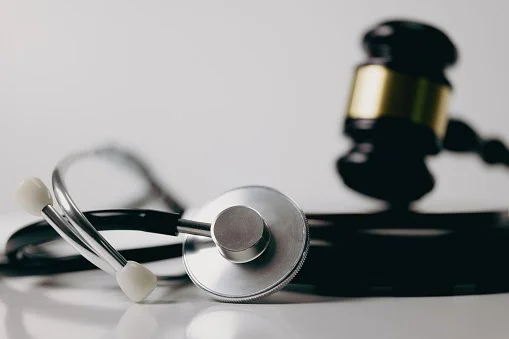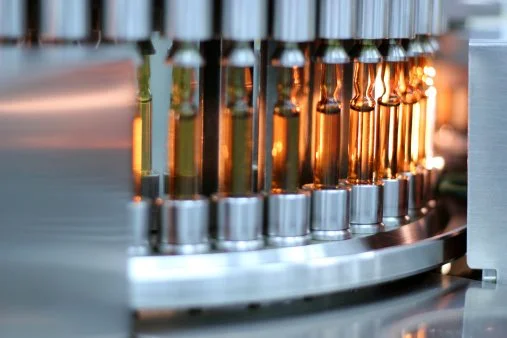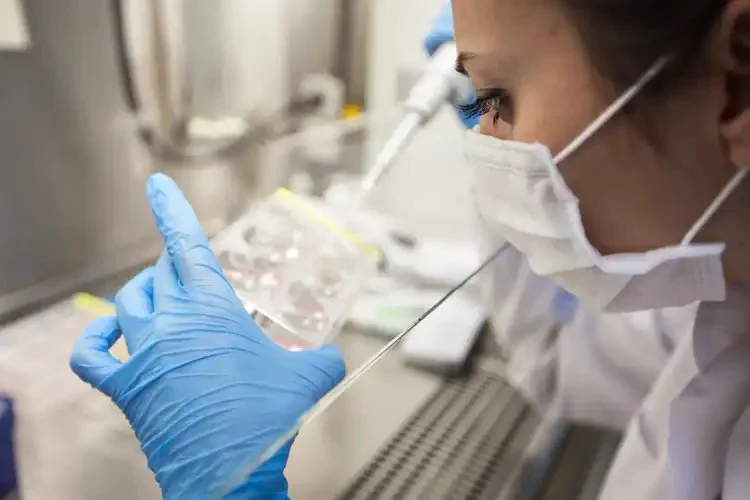Patents
By Fatima Lakkis and Kinda Diya
Introduction
Emergency physicians often encounter problems that demand creative, on-the-spot solutions. Over time, some of these workarounds evolve into novel tools, devices, or techniques that could benefit others—if they were shared and developed further. Patents offer a structured way to protect these innovations, ensuring that physician-inventors retain control over how their ideas are used, commercialized, and brought to market.
Take, for example, the EZ-IO® Intraosseous Infusion System, which provides a rapid alternative to traditional IV access in critical settings. Or the Automated External Defibrillator (AED), which has made bystander response to cardiac arrest far more effective. These are examples of innovations that have saved lives, and behind them are stories of clinicians and inventors who recognized a problem and created something new.
But innovation takes a lot of proverbial blood, sweat and tears. With it comes a sense of ownership and pride in having said “ I made this, I contributed”. But what if someone decided to bypass all the efforts and hard work you put in and started to market your invention without your permission. Without proper protection, your innovation can be copied, commercialized by others, or face barriers to widespread adoption. This is where Patents come in. Patents serve as a vital mechanism for protecting and advancing these innovations that transform patient care, enhance treatment outcomes, and pave the way for future breakthroughs. This article explores the role of patents in emergency medicine, why they matter to physicians, the essential criteria for securing one, and the process and challenges faced when creating a patent.
Note: While patents are important, they shouldn't be your first step. Start with identifying a real clinical problem and exploring creative solutions. Once you're confident your idea is unique and useful, have tried a few prototypes and have a comfortable grasp of the problem-solution dynamics and your road to commercialization, then consider patent protection.
What Is a Patent?
A patent is a government-granted right that provides the exclusive control over an invention for a period of 20 years. This protection ensures that others cannot make, use, or sell the patented invention without permission. While other intellectual property rights such as copyrights and trademarks protect the expression or identity of an idea, patents safeguard the underlying functional innovation, requiring full public disclosure of the invention in exchange for exclusivity.
In the United States, different types of patents exist, including:
Utility patents, the most common, protect the core function or operation of an invention.
Design patents, on the other hand, safeguard the unique visual design elements of a product, such as the distinctive curve of a specialized laryngoscope handle that not only improves grip but also gives the device a recognizable look.
Most medical patents fall under the utility patent category, encompassing new drugs, medical devices, procedures, gene therapies, healthcare IT systems, and other advancements that improve patient care.
Why Should Emergency Physicians Care About Patents?
Patents offer a number of benefits:
Bridging the gap between innovation and patient care: Emergency physicians frequently develop creative solutions to urgent medical challenges. Patenting these innovations ensures they can be refined, tested, and brought to market, ultimately improving patient care on a larger scale.
Protecting intellectual property from competitors: Without a patent, an invention can be copied or commercialized by others without crediting or compensating the original creator. Patents safeguard the rights of physician-innovators, ensuring they control how their discoveries are used.
Enhancing marketability and attracting investment: Investors and medical device companies are more likely to support an invention when it is legally protected. A patent signals credibility and commercial potential, increasing the likelihood of funding and large-scale production.
Generating revenue through licensing or sales: Beyond advancing medicine, patents create financial opportunities for physician-inventors. By licensing their innovation to medical manufacturers or healthcare providers, emergency physicians can earn royalties while ensuring widespread adoption.
It is also important to note the limitations of patents. While they mean that the law is likely on your side in the case of a copycat attempt, they are only as good as your ability to fund the litigation of their enforcement. Court cases are costly.
Criteria for a Patentable Invention
For an invention to be patentable, it must meet several key criteria: it must be novel, non-obvious, useful, and operable. Novelty means the invention is new and hasn't been publicly disclosed before the patent application is filed. Non-obviousness requires that the invention represents a significant leap beyond existing ideas, rather than a trivial modification. Usefulness indicates that the invention must offer a practical benefit, essential in emergency medicine where every innovation should lead to tangible improvements in patient care. Additionally, the invention must be operable, meaning it can be effectively used in a real-world setting by someone skilled in the field and cannot just be a theory.
The Patent Process: From Idea to Protection
1. Document Your Idea
Before proceeding with patent applications, the idea needs to be meticulously documented in every aspect. It may give a timeline to track the whole developmental process regarding the idea, which is very important in proving the originality right through a patent dispute. Use an innovative journal or laboratory notebook and record the whole thing about your idea- sketches, definitions, variations. For example, for a new medical device, document how ideas came up, what the problem is that they solve, and refer to any discussions; focus also on the prototypes and experiments.
If there happens to be a need to discuss the idea with other potential collaborators or investors, you could consider having them sign a nondisclosure agreement (NDA). One of the advantages of the NDA is to prevent the opposite party from legally divulging or laying claim to your idea without your say so. For example, when you work with an engineer to refine your device, both of you will be bound not to disclose what you discuss under an NDA. However, do not think it necessary to have everyone you engage in a conversation with sign an NDA. Remember: Successful solutions are 10% originality and 90% execution, and ideas are a dime a dozen (and most fail). Just because someone finds your solution interesting, it does not mean they can execute it the way you can, and have the passion to take it from conception to marketable product.
2. Conducting a Preliminary Patent Search
Before investing resources into preparing your patent application, perform preliminary research to ensure your idea doesn't infringe upon an existing patent. To perform a primary search, use Google patents and free resources from USPTO.gov and WIPO database. If your invention has to do with creating a new type of catheter, make sure there is no other device quite the same as yours.
Though a preliminary search can be carried out independently, it can be extremely onerous. it sure pays to engage a patent lawyer who will conduct a professional search. The legal professionals know the database intricacies and such results in conflicts that would be hard for one without a professional background to identify. They can also be instrumental in helping you prepare your application and save you countless hours and revisions.
3. Filing a Provisional and Non-Provisional Patent.
Having established the overall novelty of your idea, you should now consider whether to file either a provisional patent application (PPA) or proceed with a non-provisional patent application (NPA).
Provisional Patent Application (PPA): A PPA can be a quick and economical way to get an early filing date and patent pending filings. The provisional lasts for 12 months, permitting refinements to your invention or obtaining funds. For example, if you have developed a new surgical tool, but still wish to carry out further tests, then you can protect your idea with PPA and continue improving it. It can give you lead time time to obtain funding, particular since it is a shorter process, while still offering protection.
Non-Provisional Patent Application (NPA): It is the formal application necessary for examination and includes clear descriptions, claims, and usually also drawings of your invention. For instance, if you have perfected the design of a new diagnostic device, you would file an NPA to formally enter the patent process.
4. Patent Examination Process.
After you have filed your NPA, it will be taken forward by the USPTO and the process can last anything between 1-3 years, where you will get a lot of Office Actions, i.e., official communications from the USPTO. For example: the application has been rejected because its claims are either too broad or it overlaps with some existing patents.
Office Actions should indeed be dealt with as carefully as possible. You may need to amend your claims or provide additional evidence to substantiate your application. Working with a patent attorney at this point would be highly advantageous as they craft articulate responses. For example, if your application for a new imaging device gets a rejection, the attorney can help narrow the claims to highlight its uniqueness.
Common pitfalls and how to avoid them:
Public Disclosure vs. Filing: A public disclosure terminates a patent interest. For instance, presenting an idea at a conference without an NDA or provisional patent application would compromise patenting rights. The advisability is to file at least a provisional patent application prior to any public disclosure.
Poor Patent Search: Little or no patent search results can result in massive wastes of time and expenditure. For instance, if you are applying for a patent on a new stent design and later find that there exists a patent for a similar design, you could be forced to abandon the application.
Claims Too Broad or General: Claims that are too broad will lead to rejection. For instance, claiming a "new method for treating hemorrhage" without pinpointing specific steps or technologies that may work will result in rejection of the application. A patent lawyer shall aid in drafting the claims properly in compliance with USPTO requirements.
It is very essential for physicians who invent to know the patent process so as to protect and/or commercialize their ideas. After that, be sure to document your invention with great attention to and perform a complete patent search. Following this, determine and analyze whether the provisional or non-provisional patent option is most suitable for your circumstance, and prepare yourself for the examination process. Beware of common traps, such as public disclosure before filing or drafting overly broad claims.
Final Thoughts
Patents are an essential part of the innovation journey—but not the first. Start with a problem worth solving. Once you’ve refined your solution, document it, perform a thorough search, and then explore your protection options.
Resources like the USPTO website, legal firms specializing in medical IP, and entrepreneurship programs for physicians can help you navigate the process.
Your idea doesn’t need to change the world overnight. But with the right steps, it could change how emergency care is delivered—one innovation at a time.
Recommended Reading:
The Physician Inventor: The Doctor's Handbook to Patenting Medical Devices and Methods.
This book is a practical roadmap for doctors, nurses, engineers, startups and others looking to protect their medical devices and methods. The purpose of this book is to equip you to make decisions. Caselaw and footnotes are intentionally kept to a minimum, focusing instead on functional knowledge, sensible advice, and useful anecdotes and examples.
References
Oxford, B. (n.d.). 3,500+ Patent medicine stock photos, pictures & Royalty-Free Images - iStock. https://www.istockphoto.com/photos/patent-medicine
Patent essentials. (2025, February 18). USPTO. https://www.uspto.gov/patents/basics/essentials
Types of patents available under federal law. (2024, October 15). Justia. https://www.justia.com/intellectual-property/patents/types-of-patents/#:~:text=Under%20U.S.%20Code%20Title%2035,applicant%20in%20clear%2C%20definite%20terms
SCIFIN | EZ-IO. (n.d.). https://scifin.net/post-ez-io.html




